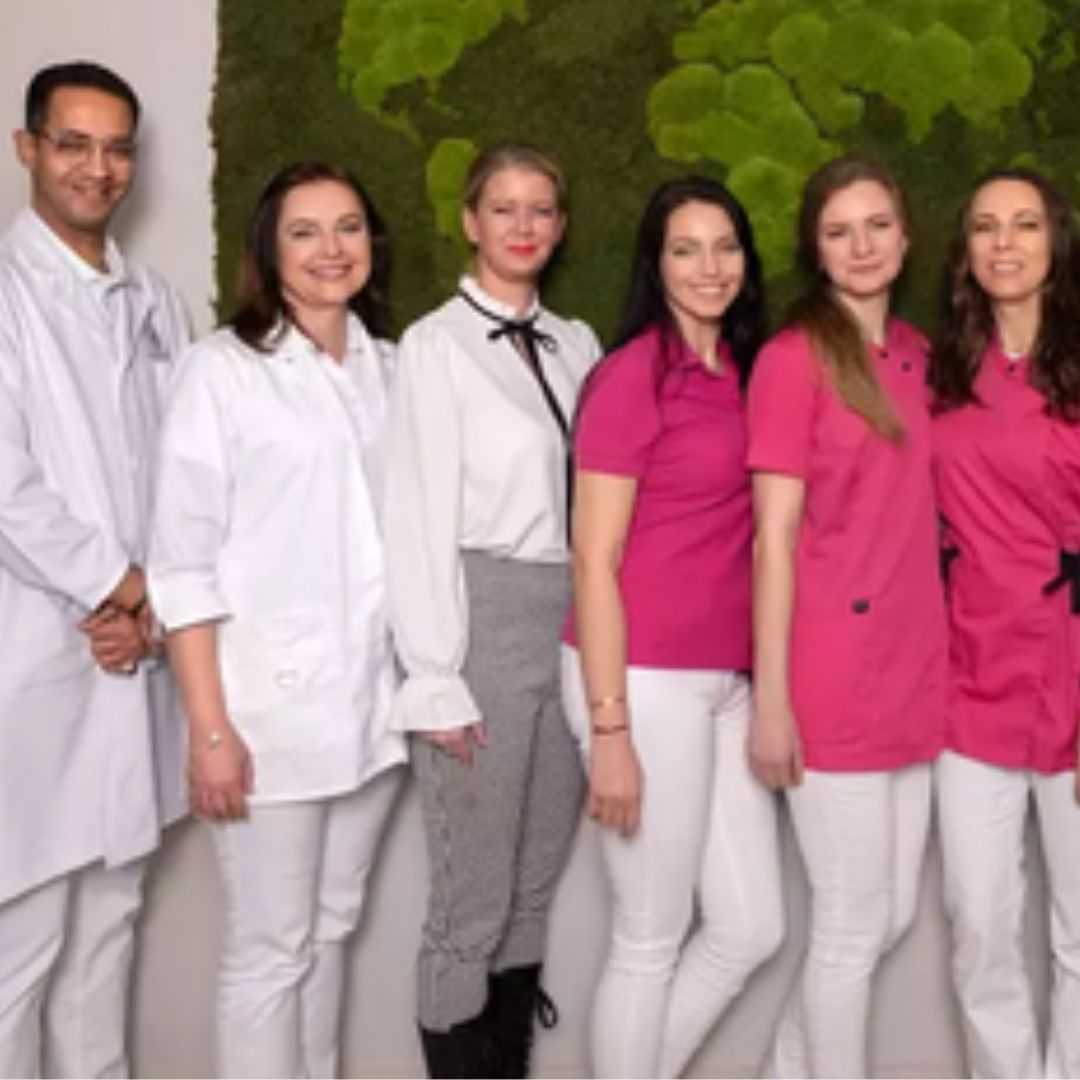
Restore Your Smile: Exploring Affordable LED Composite Dental Fillings Globally
Experiencing a sharp pang when you bite into something sweet? Or perhaps a lingering sensitivity to hot and cold that just won't quit? These could be tell-tale signs of a cavity, a common dental problem affecting millions worldwide. When tooth decay sets in, prompt treatment is crucial not only to relieve pain but also to prevent further damage and potential tooth loss. Fortunately, modern dentistry offers excellent solutions, with LED composite dental fillings standing out as a popular, effective, and aesthetically pleasing choice.
LED composite dental fillings, often referred to as "white fillings" or "tooth-colored fillings," are a remarkable advancement over traditional metal fillings. They are made from a mixture of plastic and fine glass particles, designed to bond directly to your tooth structure. Once applied, a special LED light is used to rapidly harden the material, creating a strong, durable, and virtually invisible repair. This procedure effectively restores the tooth's form and function, blending seamlessly with your natural smile.
For many, the cost of quality dental care, including LED composite fillings, can be a significant barrier. This is where the concept of dental tourism comes into play. Patients are increasingly looking beyond their borders to access high-quality, affordable dental treatments in countries known for excellent medical facilities and skilled practitioners. Whether you're dealing with persistent tooth sensitivity, a visible cavity, or simply looking to replace old, unsightly amalgam fillings, understanding your options for LED composite dental fillings – both at home and abroad – is your first step towards a healthier, brighter smile.
What are the common symptoms that indicate you might need a dental filling?
Identifying the early signs of a cavity or tooth damage can save you from more extensive and costly treatments down the line. While some cavities may be asymptomatic in their initial stages, several clues can suggest you need a dental filling:
- Tooth Sensitivity: A common indicator is sensitivity to hot or cold temperatures, or even sweet foods and drinks. This sensation might be brief or linger for a while.
- Toothache or Pain: You might experience mild to sharp pain when chewing or biting down. This pain can also occur spontaneously without any apparent cause.
- Visible Holes or Pits: Sometimes, you can actually see a small hole, pit, or discoloration (often dark brown or black) on the surface of your tooth.
- Staining: Dark spots or brown/black stains on the tooth surface, particularly in grooves or pits, can signal decay.
- Food Trapping: Food consistently getting stuck in a particular area between your teeth can indicate a void or cavity.
- Rough or Chipped Areas: If you feel a rough spot or a small chip with your tongue, it might be a sign of damage that needs a filling.
If you experience any of these symptoms, it's crucial to consult a dentist. They can properly diagnose the issue using visual examination, dental probes, and X-rays.
What causes cavities and increases the need for dental fillings?
Cavities, medically known as dental caries, are tiny holes in your teeth caused by tooth decay. This process involves several factors:
- Plaque Formation: Plaque is a sticky, colorless film of bacteria that constantly forms on your teeth. When you consume sugary or starchy foods and drinks, these bacteria feed on the carbohydrates, producing acids.
- Acid Erosion: These acids attack and erode the enamel, the hard, protective outer layer of your teeth. Over time, this erosion creates small holes or cavities.
- Poor Oral Hygiene: Inadequate brushing and flossing allow plaque to accumulate and acids to continually attack tooth enamel.
- Sugary and Starchy Foods: Frequent snacking on sweets, sodas, chips, and other carbohydrates provides a constant food source for acid-producing bacteria.
- Dry Mouth: Saliva helps wash away food particles and neutralize acids. A lack of saliva (xerostomia) increases the risk of cavities.
- Receding Gums: When gums recede, they expose the tooth roots, which are softer and more vulnerable to decay than enamel.
- Inadequate Fluoride: Fluoride strengthens tooth enamel and makes it more resistant to acid attacks.
Understanding these causes is key to prevention, emphasizing the importance of good oral hygiene and a balanced diet.
What types of dental fillings are available, and why choose LED composite?
When it comes to dental fillings, you have several material options, each with distinct advantages and disadvantages:
- Amalgam Fillings (Silver Fillings): These are durable, relatively inexpensive, and have been used for over a century. However, they are noticeable due to their silver color and contain mercury.
- Gold Fillings: Highly durable and biocompatible, gold fillings are often custom-made. They are very expensive and require multiple dental visits.
- Porcelain (Ceramic) Fillings: These are custom-made, natural-looking, and very aesthetic. They are often more expensive than composite and can be more brittle.
- Glass Ionomer Fillings: These fillings release fluoride, which can help protect against further decay. They are often used for children's teeth or in areas not subject to heavy chewing pressure due to their lower durability.
- Composite Resin Fillings (LED Composite): These are tooth-colored fillings made from a plastic and glass mixture. They are applied in layers, and each layer is cured (hardened) with a special LED light.
Why choose LED Composite Fillings?
LED composite fillings are increasingly popular for several reasons:
- Aesthetics: They can be matched precisely to your natural tooth color, making them virtually invisible. This is a significant advantage, especially for front teeth or visible areas.
- Bonding: Composite resin chemically bonds to the tooth structure, providing additional support to the weakened tooth. This allows for more conservative preparation, preserving more of your healthy tooth.
- Versatility: Besides filling cavities, composite resin can also be used to repair chipped teeth, close gaps, or change the color or shape of teeth (cosmetic bonding).
- Mercury-Free: Unlike amalgam fillings, composite fillings do not contain mercury, appealing to those concerned about metal in their bodies.
- Minimally Invasive: The bonding process often requires less removal of healthy tooth structure compared to amalgam fillings.
Who is an ideal candidate for LED composite dental fillings?
Most individuals needing a dental filling can be excellent candidates for LED composite fillings. Specific situations where they are particularly suitable include:
- Small to Medium Cavities: Composite fillings are highly effective for treating small to moderate cavities, especially in visible areas where aesthetics are a concern.
- Chipped or Fractured Teeth: The bonding ability of composite resin makes it an excellent choice for repairing minor chips or cracks on front or back teeth.
- Replacing Old Amalgam Fillings: Many patients opt to replace their old silver-mercury fillings with tooth-colored composite for cosmetic reasons or due to concerns about mercury.
- Cosmetic Enhancements: Composite resin can be used for dental bonding to improve the appearance of discolored, misshapen, or gapped teeth.
- Patients Seeking Mercury-Free Options: For those who prefer to avoid metal in their dental restorations, composite fillings are a safe and effective alternative.
However, composite fillings may not be suitable for very large cavities or those under extreme chewing pressure, as they might be less durable than other materials in such cases. Your dentist will evaluate your specific needs and recommend the best filling material for you.
What is the recovery time and what should I expect after a composite filling?
One of the advantages of LED composite fillings is the minimal recovery time. Here's what you can generally expect:
- Immediate Activity: Unlike some other procedures, you can typically eat and drink as normal once the local anesthesia wears off, usually within a few hours. There's no "setting time" like with some older filling materials.
- Temporary Sensitivity: It's common to experience some mild sensitivity to hot, cold, or pressure for a few days after the procedure. This is usually transient and should subside on its own.
- Adjusting to the Bite: Your dentist will ensure the filling is perfectly aligned with your bite. If it feels "high" or uneven after the anesthesia wears off, contact your dentist for an adjustment. This is a simple, quick fix.
- Maintaining Oral Hygiene: Continue your regular brushing and flossing routine. Good oral hygiene is essential to prevent new decay around the filling.
- Longevity: With proper care, composite fillings can last 5-10 years or even longer. Regular dental check-ups are important to monitor their condition.
If you experience severe pain, swelling, or the sensitivity doesn't improve after a few days, contact your dentist immediately.
What are the potential risks and side effects of dental fillings?
Dental fillings are a routine and generally safe procedure, but like any medical treatment, they carry some potential risks and side effects:
- Tooth Sensitivity: The most common side effect is temporary sensitivity to hot, cold, air, or pressure, which usually resolves within days or weeks.
- Pain Around the Filling: Mild pain or discomfort when biting down can occur if the filling is too high or if the nerve inside the tooth is irritated.
- Allergic Reactions: While rare, some individuals may be allergic to the materials used in composite fillings. Symptoms could include itching, swelling, or a rash.
- Nerve Damage: In cases of very deep cavities, the filling procedure might irritate the tooth's nerve, potentially leading to pulpitis (inflammation of the pulp). In severe cases, this could require a root canal.
- Cracked or Chipped Filling: Fillings can sometimes crack, chip, or break, especially under heavy chewing pressure or if they are very large.
- Leaking or Loosening: Over time, the bond between the filling and the tooth can weaken, allowing bacteria to leak underneath, potentially causing new decay. Fillings can also become loose and fall out.
- Secondary Decay: New decay can form around the edges of a filling if proper oral hygiene isn't maintained.
Discuss any concerns with your dentist, who can explain these risks in detail and how they apply to your specific situation.
How much do dental fillings cost worldwide?
The cost of LED composite dental fillings can vary dramatically depending on the country, the clinic's reputation, the dentist's experience, the size and location of the cavity, and whether any additional procedures (like X-rays or anesthesia) are included. Here's a general cost comparison (prices are estimates per tooth and can fluctuate):
| Country/Region | Estimated Cost per LED Composite Filling (USD) | Notes |
|---|---|---|
| USA / Canada | $200 - $600+ | High cost of living and dental care. Varies greatly by state/province and insurance coverage. |
| UK / Western Europe | $180 - $500+ (approx. £150-£400) | Similar high costs, though some variations exist between countries. |
| Mexico | $70 - $200 | Very popular for US/Canadian patients due to proximity and significant savings. |
| Turkey | $80 - $250 | Known for high-quality, affordable dental work, often combined with tourism. |
| Thailand | $60 - $200 | Excellent standards, especially in major cities, attracting patients globally. |
| Hungary / Poland | $100 - $300 | Strong reputation in Eastern Europe for quality dental care at lower prices. |
| India | $50 - $150 | Very competitive pricing with modern facilities in metro areas. |
These figures are averages. Always get a detailed quote from your chosen clinic abroad, ensuring it includes all necessary steps, like initial consultation, X-rays, and local anesthesia.
Why consider getting dental fillings abroad?
The decision to travel for dental work, often termed "dental tourism" or "medical tourism for dental," is increasingly popular. Here are the main reasons why patients consider getting dental fillings abroad:
- Significant Cost Savings: This is often the primary driver. For simple procedures like fillings, savings can range from 50% to 70% compared to Western countries.
- Access to High-Quality Care: Many countries specialize in medical tourism and have world-class dental clinics equipped with modern technology and highly trained dentists.
- Shorter Wait Times: In some countries, getting an appointment for dental procedures can involve long waits. Abroad, you can often get treatment much faster.
- Combine Treatment with a Vacation: A dental trip allows you to recover and enjoy the sights and culture of a new country, turning a necessity into a rewarding experience.
- Privacy: Some individuals prefer the anonymity of receiving treatment away from their local community.
- Advanced Technology: Many international clinics invest heavily in the latest dental technology, offering state-of-the-art diagnostics and treatment methods, including advanced LED curing lights for composite fillings.
Which countries offer the best value for dental fillings as a medical tourist?
Several countries have established themselves as top destinations for dental tourism, offering excellent value for procedures like LED composite fillings:
- Mexico: Especially popular for North Americans due to proximity, offering significant savings and modern clinics in border towns like Tijuana or cities like Cancun.
- Turkey: An emerging hub for medical tourism, Turkey provides high-quality, affordable dental work, particularly in Istanbul and Antalya, often combined with attractive travel packages.
- Thailand: Known for its exceptional hospitality and advanced medical facilities, major cities like Bangkok and Phuket offer top-tier dental care at competitive prices.
- Hungary: A pioneer in European dental tourism, Budapest, in particular, boasts numerous clinics offering advanced treatments at a fraction of Western European or North American costs.
- Poland: Another strong contender in Eastern Europe, Poland provides modern dental clinics and highly skilled dentists, with cities like Krakow and Warsaw attracting international patients.
- India: For those willing to travel further, India offers extremely competitive pricing, particularly in large cities like Mumbai, Delhi, and Bangalore, with many English-speaking dentists.
When choosing, consider factors beyond cost, such as clinic accreditations, dentist qualifications, language proficiency, and patient reviews.
What should I expect when traveling abroad for dental fillings?
Embarking on a dental journey abroad requires some planning. Here’s a general outline of what to expect:
- Research and Planning: Start by researching reputable clinics and dentists. Look for accreditation, qualifications, and patient reviews. Many dental tourism facilitators (like PlacidWay) can assist with this.
- Initial Consultation (Remote): Often, you can have an online consultation with the chosen dentist, sending X-rays and discussing your needs. They'll provide a treatment plan and quote.
- Travel Arrangements: Book flights, accommodation, and ground transportation. Many clinics offer assistance with these logistics.
- Arrival and In-Person Consultation: Upon arrival, you'll have an in-person consultation, often including new X-rays, to confirm the treatment plan.
- The Procedure: The filling procedure itself is largely similar to what you’d experience at home. It’s typically a single visit per tooth unless multiple complex fillings are needed. Local anesthesia will be administered, the decay removed, and the composite resin applied and cured with an LED light.
- Post-Procedure: You'll receive aftercare instructions. Mild sensitivity is normal. You can typically resume normal activities and enjoy your trip.
- Follow-up: While direct follow-up might be challenging, the clinic will provide contact information for any concerns. For simple fillings, extensive follow-up is rarely required.
Always ensure you have a clear understanding of the treatment plan, costs, and aftercare before committing.
How can I ensure safety and quality when getting dental fillings overseas?
Ensuring safety and quality is paramount when seeking dental care abroad. Here's how you can do it:
- Choose Accredited Clinics: Look for international accreditations (e.g., JCI - Joint Commission International) or local government health ministry approvals. These indicate adherence to high standards.
- Verify Dentist Qualifications and Experience: Research the dentist's education, specialization, and years of experience. Many reputable clinics will display their dentists' CVs.
- Read Patient Reviews and Testimonials: Seek out independent reviews on platforms like Google, Trustpilot, or dedicated medical tourism forums. Look for consistent positive feedback.
- Ask About Technology and Materials: Inquire about the type of composite materials used (e.g., brands, quality) and the technology employed (e.g., digital X-rays, advanced LED curing lights).
- Confirm Sterilization Protocols: Ensure the clinic follows strict sterilization and hygiene standards to prevent infections.
- Communicate Effectively: Choose a clinic where you can communicate clearly with the dental team, ideally in your native language or English, to avoid misunderstandings.
- Get a Written Treatment Plan and Cost Breakdown: Demand a clear, itemized quote before starting treatment, outlining all procedures and costs.
- Understand Aftercare and Warranty: Clarify what happens if complications arise after you return home. Do they offer any warranty on their work?
- Use a Reputable Facilitator: Companies like PlacidWay specialize in connecting patients with vetted, high-quality international clinics, adding an extra layer of assurance.
What are common patient experiences and outcomes for dental fillings abroad?
Patients who choose to undergo dental filling procedures abroad often share overwhelmingly positive experiences, highlighting several key benefits:
- High Satisfaction with Results: Patients frequently express satisfaction with the aesthetic outcome of their LED composite fillings, appreciating how seamlessly they blend with natural teeth.
- Exceptional Value: The most common feedback revolves around the significant cost savings, allowing patients to receive necessary dental work that might have been unaffordable or inaccessible at home.
- Efficiency and Professionalism: Many report a highly efficient and professional treatment process, with clinics equipped with state-of-the-art technology and attentive staff.
- Comfortable Experience: Clinics catering to international patients often prioritize comfort, providing English-speaking staff, modern amenities, and a focus on patient care.
- Positive Travel Memories: Combining dental treatment with a trip allows patients to enjoy a new culture, relax, and heal, transforming a dental appointment into a memorable experience.
- Improved Oral Health and Confidence: Ultimately, patients return home with healthier teeth, free from pain, and a renewed confidence in their smile, thanks to the durable and natural-looking composite fillings.
While individual experiences can vary, the trend strongly indicates that for many, dental tourism for fillings is a successful and rewarding choice, providing access to quality care without breaking the bank.
Take the Next Step with PlacidWay
Ready to explore treatment options abroad? Discover top clinics, compare prices, and get a free quote tailored to your needs with PlacidWay.
Dental Tourism | Cosmetic Dentistry | Implants | Root Canals | Dentures | Bridges | Orthodontics | Dental Holidays Abroad










Share this listing